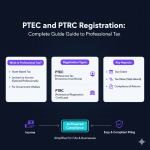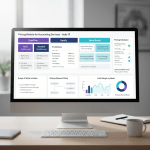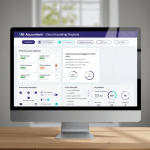Key takeaways
- India’s bank connectivity is powered by consent based Account Aggregator rails, not screen scraping, giving finance teams secure, auditable access to client data.
- Blend Account Aggregator data with direct bank APIs and a PDF fallback to achieve reliable, near real time coverage across multiple banks.
- Design for resilience, use webhooks where available, polling elsewhere, with idempotency, deduplication, and UTR centric matching at the core.
- Automate reconciliation, AR allocation, AP payment runs, cash visibility, and compliance checks, then focus humans on exceptions.
- Evaluate build versus buy pragmatically, speed to multi bank coverage, consent UX, and ongoing RBI compliance are often decisive factors.
- Start with a small pilot, measure match rates and time saved, standardize mappings, then scale with governance, training, and audit ready controls.
Table of contents
What open banking integration means in India
Open banking integration in India is consent first and uniquely Indian. Instead of PSD2 mandates, we use the DEPA consent framework and the Account Aggregator system that puts customers in control.
The ecosystem involves three roles, FIPs are banks holding data, FIUs are applications that use data, and Account Aggregators orchestrate consent and encrypted data exchange. Aggregators never see raw data, only encrypted packets that FIUs decrypt with their private keys.
Not everything goes through Aggregators, some banks expose proprietary APIs for specialized needs like payment initiation or treasury. For instance, Federal Bank’s API banking platform provides direct corporate banking APIs that complement consent based data sharing.
Consent is the cornerstone. Clients see what you are asking for, which accounts, time range, frequency, they can approve or revoke anytime. That clarity builds trust and makes the model sustainable.
For CA firms, this enables authorized, programmatic access to client transactions, balances, and account details, eliminating manual downloads. For SMBs, multi bank connectivity flows into accounting with fewer errors and faster reconciliations. RBI oversees the framework, DEPA guides the architecture, and ecosystem bodies drive standardization.
The Account Aggregator API in practice
The consent journey is transparent, the client reviews an explicit request, scope, period, and frequency, then approves. A consent artifact is created, a verifiable, revocable record of permission.
Data you typically receive includes:
- Account details, identifiers, type, branch, opening date.
- Transactions, date, amount, description, balance, type, references, the backbone for reconciliation.
- Balances, current and available balances, and holds for cash position visibility.
Security is rigorous, encryption at source, tokenization in transit, decryption only by the authorized FIU. RBI mandates complete audit logs for consent creation, retrievals, and revocations.
Be pragmatic about coverage, some banks still limit historical depth, and narration quality varies. Yet for reconciliation, GST filing, and cash analysis, recent and reliable data is what matters most. For broader automation opportunities across data and payments, see Protean Tech’s analysis.
Architecting for real time bank data
Real time often means instant in theory, but banks frequently operate in near real time, with updates every few minutes or hourly. Daily refresh still beats the old monthly PDF dance by a wide margin.
Choose your ingestion model wisely:
- Webhooks, push events when transactions post, low latency, needs reliable processing and idempotency.
- Polling, fetch at intervals, simpler to operate, slightly higher latency.
Most teams adopt a hybrid. Build a reconciliation engine around unique identifiers. UTR is gold for India, unique and portable across systems, but UTR extraction is uneven across banks and often sits inside narration fields.
Normalize across banks, map NEFT, IMPS, RTGS, and card postings to consistent categories, align reference fields, and standardize status codes. Federal Bank’s API documentation illustrates how standardized codes can reduce downstream mapping effort.
Resilience principles to bake in:
- Fallbacks, Account Aggregator as primary, direct bank APIs where available, and a controlled PDF or CSV upload for edge cases.
- Deduplication, avoid double counting when the same transaction arrives from multiple sources, lean on UTR plus amount and date, and system level Deduplication rules.
- Idempotency, process each transaction once, tolerate retries from webhooks or polling overlap.
The goal is pragmatic automation, let 80 percent of items flow straight through, use review queues for exceptions, and iterate toward higher touchless rates over time.
API banking automation opportunities for finance teams
Once clean feeds are in place, the compounding value begins.
- Automated reconciliation, match ledger entries with bank transactions using UTR, dates, and amounts, auto confirm matches, surface exceptions for review.
- Accounts receivable allocation, detect payers from narration, tag invoice references, close invoices, and notify sales automatically.
- Accounts payable runs, push approved payments to banks through APIs, reconcile confirmations, notify vendors, and update ledgers in one flow.
- Always current cash positions, multi bank balances and in flight payments in one dashboard for CFO decisions.
- Compliance automation, track GST, TDS, and advance tax payments against liabilities, reduce filing stress.
- Multi bank consolidation, unify five accounts across three banks into one coherent view and process.
- Fraud and anomaly detection, flag duplicates, unusual vendors, and large variances early.
For impact benchmarks and typical savings, Protean Tech highlights teams cutting manual work by large margins once APIs are in place.
Build vs buy a bank API integration platform in India
Choosing your path for a bank API integration platform India initiative depends on capability, time, and regulatory comfort.
Build if you have deep bank partnerships, unique workflows, a strong engineering and security team, and ongoing capacity to maintain rapidly evolving banking integrations. You will need encryption expertise, consent UX design, and robust DevOps.
Buy if you need multi bank coverage quickly, polished consent flows, continuous RBI aligned compliance, and immediate scale across entities. Platforms amortize the cost of constant API changes, certification work, and edge case handling.
Use this India focused checklist during vendor evaluation:
- Coverage, live banks, Account Aggregator support, direct bank APIs, and PDF or CSV fallbacks with real uptime metrics.
- Reliability, documented uptime, incident history, redundancy, and recovery processes.
- Security, certifications like ISO 27001 or SOC 2, end to end encryption, rigorous audit trails.
- Compliance, DEPA alignment, consent management, RBI expectations, data localization.
- Accounting fit, native Tally and Zoho Books adapters, Indian tax and GST nuances, multi entity readiness.
- Cost clarity, per transaction or subscription, volume tiers, implementation and support costs, total cost of ownership.
- Support, India time zone coverage, implementation assistance, training, and clear escalation paths.
Consider India native platforms like AI Accountant for CA firms and SMBs that need Tally or Zoho centric automation with Indian banking expertise. Global accounting suites such as QuickBooks, Xero, Zoho Books, and FreshBooks can be part of a hybrid approach depending on your stack.
Many teams blend both strategies, buy the connectivity backbone, build bespoke logic where they have proprietary advantages.
Implementation blueprint, CA firm and SMB playbooks
Here is a practical, step by step path to deploy bank APIs with confidence.
Step 1, define outcomes.
Write measurable targets, for example, reconcile 80 percent of transactions automatically within two hours, cut month end close from ten days to three, reduce DSO from thirty days to twenty two days.
Step 2, choose integration paths.
Lead with Account Aggregator for broad coverage, add direct bank APIs for payment initiation or treasury, keep a governed PDF or CSV fallback to keep operations moving.
Step 3, FIU onboarding and consent UX.
If you buy, your vendor guides FIU onboarding, if you build, expect two to three months for documentation, compliance checks, integration, and testing. Design a clear consent flow, explain why data is needed, duration, and benefits, create minimal permission templates for daily versus monthly needs.
Step 4, data modeling and ledger mapping.
Standardize categories across banks, codify UTR parsing, extract invoice numbers and GST references from narration, define exception queues for unmatched items, and write back rules for corrections.
Step 5, pilot with control.
Start with one entity and one high volume account, run in parallel for a month, measure match rates, time saved, and error reduction, fix gaps, then cut over.
Step 6, scale with governance.
Roll out in waves, for example, five entities per week, establish SLAs for reconciliation, set access controls and maker checker rules, document SOPs for exceptions and consent renewals.
Step 7, build observability.
Dashboards for consent status, fetch latency, webhook failures, duplicate detection, and match rates, alerts for bank maintenance windows and consent expiries.
Step 8, integrate the last mile.
Wire into Tally or Zoho Books, align GST, TDS, and bank charges mapping, automate AR receipts and AP payments where bank APIs allow initiation.
Step 9, harden security and audit.
Rotate keys periodically, enforce least privilege, store immutable audit trails for regulator and auditor comfort, run quarterly recovery drills.
Step 10, invest in change management.
Train accountants on exception handling, create playbooks for edge cases, celebrate quick wins to build momentum.
Mini case, a mid sized CA firm connected four major banks via Account Aggregator, layered a PDF fallback, and standardized UTR based matching. Within eight weeks, automatic match rates hit 78 percent, month end close time fell from nine days to four, and interns handled only exceptions.
FAQ
How should a CA firm decide between Account Aggregator feeds and direct bank APIs for reconciliation use cases?
Start with Account Aggregator for read access because it is consent driven, standardized, and bank agnostic. Add direct bank APIs where you need write actions like payment initiation or when a specific bank offers richer metadata or lower latency for critical accounts. Maintain a PDF or CSV fallback for historical backfill and during maintenance windows. Many firms use a primary, secondary, and tertiary source model with UTR based deduplication to avoid double counting.
What match rules deliver the highest automatic reconciliation rates for Indian bank statements?
Use a tiered approach. Tier one, UTR exact match plus amount and date tolerance, for example, plus or minus one day. Tier two, invoice reference or customer code extracted from narration plus amount. Tier three, fuzzy narration match with vendor or customer master data. Always enforce idempotency keys on transaction IDs to avoid duplicate postings. Tools like AI Accountant implement these tiers out of the box with explainable match logs.
How do we handle narration variability across banks, for example NEFT and IMPS references placed inconsistently?
Create a normalization layer. Maintain regex libraries per bank to extract UTR, invoice IDs, customer codes, and GST references from narration. Map bank specific transaction types to a common taxonomy. Keep this logic version controlled and test driven. AI Accountant provides India specific narration parsers for major banks, which accelerates onboarding and reduces false negatives.
What latency can we realistically expect for “real time bank data” in India?
Most teams experience near real time for many retail and corporate accounts, minutes to hourly updates, while some flows batch overnight. For payment initiation and status updates, direct bank APIs can be faster for specific corridors. Design SLAs by segment, priority accounts use webhooks with retries, others use five to fifteen minute polling. Always communicate expected freshness in dashboards to set stakeholder expectations.
How do we meet RBI and auditor expectations around consent, logs, and data handling?
Follow DEPA aligned consent flows, store consent artifacts immutably, and maintain end to end audit trails for consent creation, fetches, revocations, and data access. Enforce encryption at rest and in transit, rotate keys, and implement least privilege access controls. During audits, present consent logs, processing histories, and exception resolutions. Platforms like AI Accountant provide exportable audit packs that align with Indian audit practices.
What is the best way to backfill history when Account Aggregator limits the lookback window?
Combine methods. Pull the maximum allowed history via the Aggregator, then ingest older PDF or CSV statements using a controlled parser, and reconcile using the same UTR centric logic. Mark backfilled entries with a source tag to preserve lineage. Run deduplication when live feeds start to prevent double posting. This approach gives you continuity without compromising data quality.
Can we automate AR allocation reliably when customers pay without clear invoice references?
Yes, use multi signal matching. Start with exact UTR matches where customers share UTRs, then layer payer account fingerprints, historical payer patterns, and amount bucketing against open invoices. Confidence scoring can auto allocate above a threshold, with sub threshold cases routed to an exception queue. AI Accountant uses machine assisted suggestions that improve as more payments are observed.
How should a CA practice structure roles when moving from manual to API based reconciliation?
Split responsibilities into data operations and accounting review. Data operations owns consent renewals, feed monitoring, webhook retries, and source deduplication. Accounting review handles exception queues, vendor and customer master updates, and policy decisions. Introduce maker checker for payment initiation and high value reconciliations. This division keeps SLAs clear and audit trails clean.
What metrics prove the ROI of a bank API integration rollout to partners and CFOs?
Track auto match rate, time to reconcile per 1,000 transactions, exception volume per period, duplicate payment prevention, DSO reduction, on time filings for GST and TDS, and month end close duration. Convert time saved into cost savings, and quantify cash flow benefits from faster AR allocation. AI Accountant dashboards expose these metrics so leadership sees impact week by week.
How do we prevent double counting when the same transaction arrives via API and PDF during transitions?
Adopt strict deduplication keys. Primary key is UTR, secondary keys are amount and value date. Maintain a source registry and ingest order rules, for example, prefer API over PDF when both are present. Implement idempotent writes so retries or replays cannot create duplicates. Before go live, run a reconciliation dry run on a copy of the ledger to validate dedupe effectiveness.
What are common pitfalls CAs face when implementing payment initiation through bank APIs?
Missing maker checker, inadequate vendor validation, and not reconciling bank confirmations back to the ledger are typical issues. Implement payee verification, approval workflows by limit, and a reconciliation loop that posts bank confirmation IDs back to vouchers. Start with low value batches, validate end to end, then scale. Many firms use AI Accountant to orchestrate payment runs with built in controls.
If a client revokes consent mid quarter, how should we handle reporting obligations?
Continue to use data already fetched under valid consent, but stop all future retrievals immediately. Notify the client, explain the operational impact, and request a new consent scoped to pending reporting needs. Maintain a manual fallback for the affected period. Keep a clear audit trail showing consent revocation time, actions taken, and communication records for compliance comfort.




